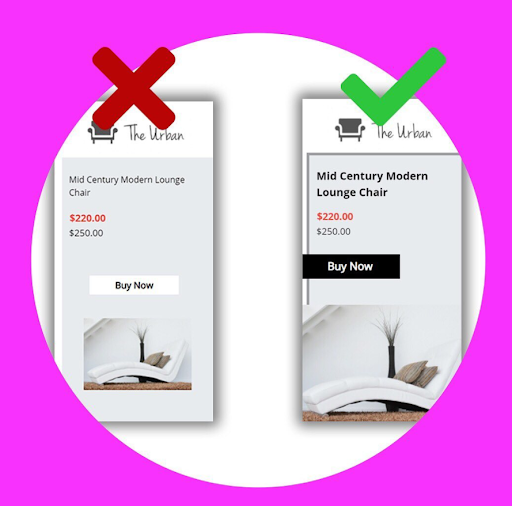After launching your advertising campaign, you want to make sure your campaign is performing well and is cost-effectively meeting your business goals. Tracking campaign performance is critical to running a successful campaign and provides insights into what works and what doesn’t. In Adacado, you can view your campaign performance in the “Campaign Analytics” tab.
If your campaign is performing poorly, then you should consider optimizing your ads. Ad optimization is the process of improving your ads based on data collected over time, and it involves data collection, making improvements to your ads, and testing. The ultimate goal of optimization is to make ads more relevant and persuasive to engage potential customers and ultimately lead them to conversions.
High CTR and Low CPC
Ad optimization starts with reviewing your campaign performance, and the most important key performance metrics to look closely at are “Click-Through Rate (CTR)” and “Cost Per Click (CPC).”
CTR is an important metric that tells you whether your ads are working effectively with your target audience. A low CTR may indicate that your ad isn’t attractive enough to drive clicks or that you’re targeting the wrong prospects. Therefore, your optimization activities should aim to increase your ad CTR to maximize ad effectiveness and cost efficiency.

How to Increase Your Display Ad CTR
There are many ways to increase CTR, from changing the background color to very complex and sophisticated optimizations. This article will introduce basic and easy ways to improve your ad CTR by optimizing your ad creative and campaign targeting to create ads that drive the right target audience to your website.
Optimizing Ad Creative
In advertising, the creative is what brings meaning to your brand, products, and services and creates meaningful connections with customers; thus, creating ads that stand out in a crowded internet world is critical to attract, retain, and engage your audience.

1. Design principles
- A design aligned with your brand and offer
- Keep it simple to increase the attention, readability, and intuition of your ads
- Clear communication that presents only the most relevant information
- Content tailored to the target audience
- Contrast of various ad elements to attract visual attention
2. Key components in your ads
- Your logo or company name
- Logo color that contrasts with the background color or image

- Imagery
- Images that go well with your brand and best visualize your offer
- High-quality images for logos and elements that need to stand out
- Product images on white background
NOTE: Try the free-to-use open-source image library Adacado offers for stock images
- Your main value proposition or what you can provide customers
- A Call to Action (CTA) button that will entice the user to click on your ads
3. Compelling CTA Button

- Color
- A color that contrasts with the background color
- CTA Copy
- Short actionable copy with a sense of urgency related to your offer
- Clear copy that helps users understand what to expect post-click
- Placement
- Left, center, or right of the lower area, depending on the position of the other elements
4. Simple, clear, relevant, and persuasive ad copy
- Use of few keywords in the headline
- Deliver value for your audience through your brand, product, or service
- Appealing to the feelings and needs of the audience (e.g posing a question, solving a problem for them, and expressing empathy)
- Relevance to the content your audience sees after clicking on your ad
- Action-oriented
- Use of only impactful messages without images
5. Use of color
- Colors that match your brand and target audience
- Keep a simple color palette to avoid distracting users
- Use a contrasting background color to make the image and text in your ad stand out
6. Use of typography
- Use fonts that align with your brand
- Make your message stand out instantly with a simple combination of a clear, easy-to-read font style and font size
- Use a font color that contrasts with the background color
NOTE: You can download free web fonts for commercial use from Google Fonts
7. Use of multiple ad sizes
- Consider running several of the most popular and effective ad sizes
- 300×250 – Medium Rectangle
- 728×90 – Leaderboard
- 300×600 – Half Page
- 160×600 – Wide Skyscraper
To learn more about how creatives play a vital role in ad performance and how you can improve your ad creative, read the following Adacado blog articles:
Targeting
Delivering tailored ads to the right audience is one of the key success factors for maximizing campaign performance, and optimizing your campaign targets, along with ad creative optimization, is the most effective way to ensure your ads reach the most qualified prospects who are most likely to engage and ultimately convert.
1. Optimize Audience and Location Targeting
- Adjust your target audience broader or narrower based on your campaign goals and performance
- In Adacado, you can narrow your audience by demographics, household income, life events, interests, or language. Narrowing your audience is a great way to reach a more relevant audience, but it can lead to a smaller audience
- Use location targeting to make your ads more relevant by reaching people in certain geographic locations
2. Take Advantage of Dynamic Retargeting (Remarketing) Ads
- Dynamic ads allow you to advertise many products or services, dynamically changing the products shown to viewers
- Dynamic retargeting ads are tailored to users who have already visited and engaged with your business. Ads with personalized content are the most effective way to increase CTR and cost effectiveness by reminding your audience about your brand or product and making your ads more relevant to audiences likely to convert
- Learn more about how to add a data feed and implement the Adacado pixel for a retargeting campaign
To learn more about targeted advertising, read the following Adacado blog articles:
To Sum It Up
- Review your “Campaign Analytics” to track campaign performance
- Analyze your campaign performance metrics against industry benchmarks
- Identify areas for improvement and optimize your ad creative and targeting accordingly
- Test your updated ad and review its performance
